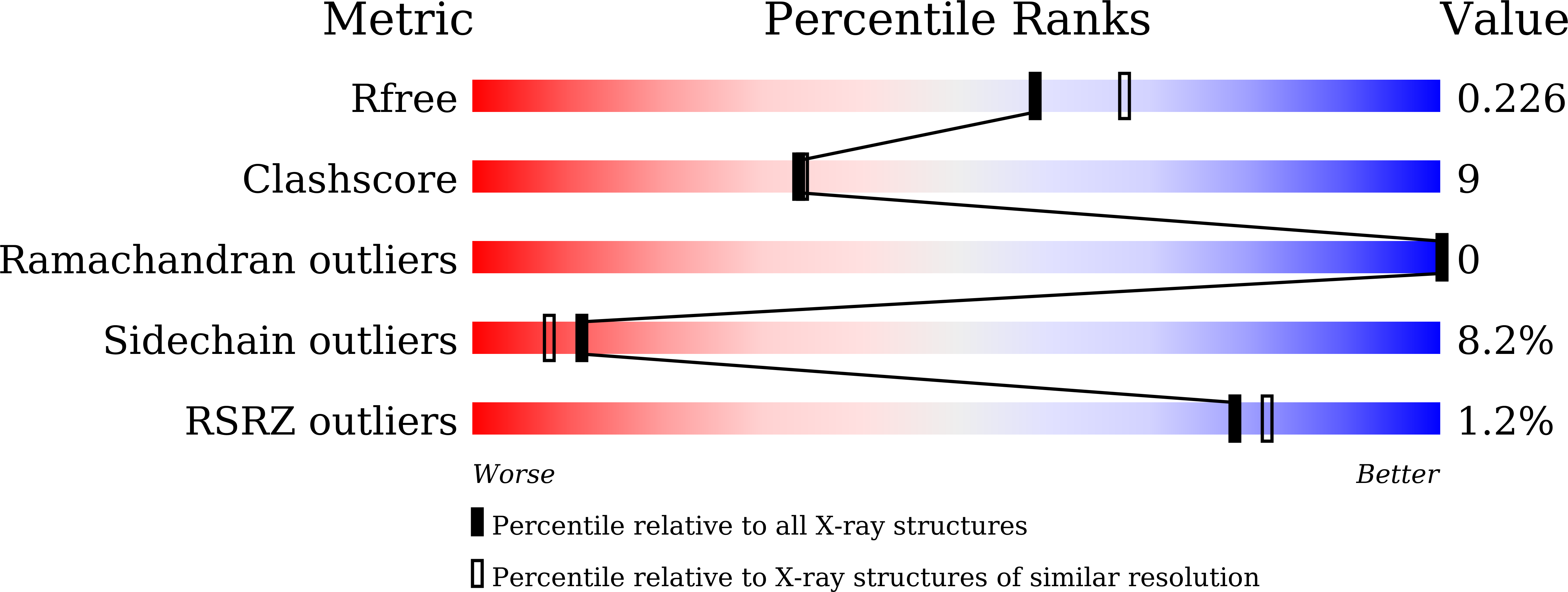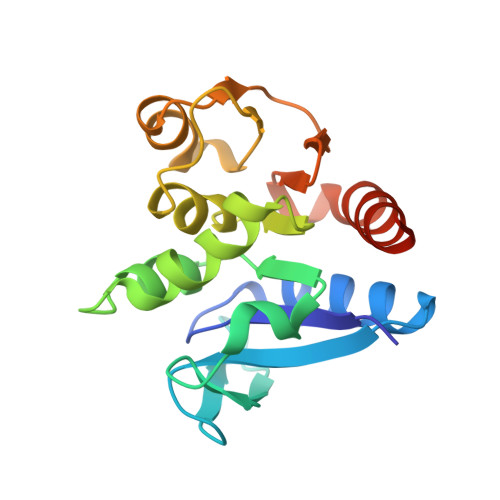Structural and functional insight into the different oxidation states of SAV1875 from Staphylococcus aureus
Kim, H.J., Kwon, A.R., Lee, B.J.(2016) Biochem J 473: 55-66
- PubMed: 26487697
- DOI: https://doi.org/10.1042/BJ20150256
- Primary Citation of Related Structures:
4Y0N, 4Y1E, 4Y1F, 4Y1G, 4Y1R - PubMed Abstract:
The DJ-1/ThiJ/PfpI superfamily is a group of proteins found in diverse organisms. This superfamily includes versatile proteins, such as proteases, chaperones, heat-shock proteins and human Parkinson's disease protein. Most members of the DJ-1/ThiJ/PfpI superfamily are oligomers and are classified into subfamilies depending on discriminating quaternary structures (DJ-1, YhbO and Hsp types). SAV1875, a conserved protein from Staphylococcus aureus, is a member of the YhbO-type subfamily. However, its structure and function remain unknown. Thus, to understand the function and activity mechanism of this protein, the crystal structure of SAV1875 from S. aureus was determined. The overall fold of SAV1875 is similar to that observed for the DJ-1/ThiJ/PfpI superfamily. The cysteine residue located in the dimeric interface (Cys(105)) forms a catalytic triad with His(106) and Asp(77), and it is spontaneously oxidized to Cys(105)-SO2H in the crystal structure. To study the oxidative propensity of Cys(105) and the corresponding functional differences with changes in cysteine oxidation state, the crystal structures of SAV1875 variants E17N, E17D and C105D, and over-oxidized SAV1875 were determined. We identified SAV1875 as a novel member of the YhbO-type subfamily exhibiting chaperone function. However, if SAV1875 is over-oxidized further with H2O2, its chaperone activity is eliminated. On the basis of our study, we suggest that SAV1875 functions as a chaperone and the redox state of Cys(105) may play an important role.
Organizational Affiliation:
Research Institute of Pharmaceutical Sciences, College of Pharmacy, Seoul National University, Gwanak-gu, Seoul 151-742, Republic of Korea.















